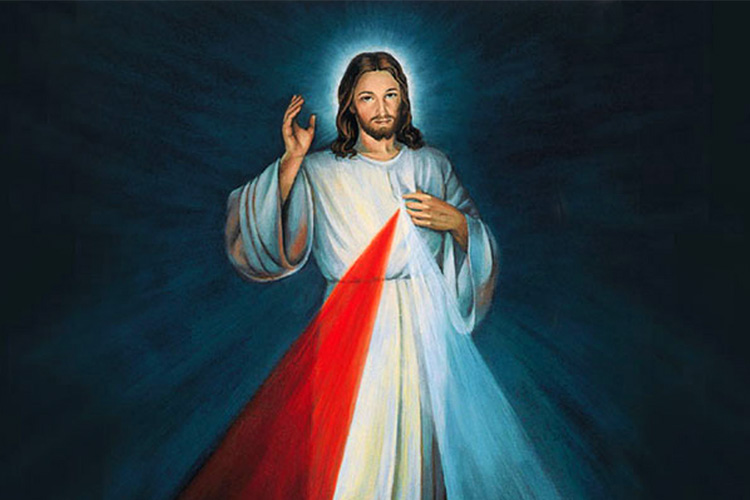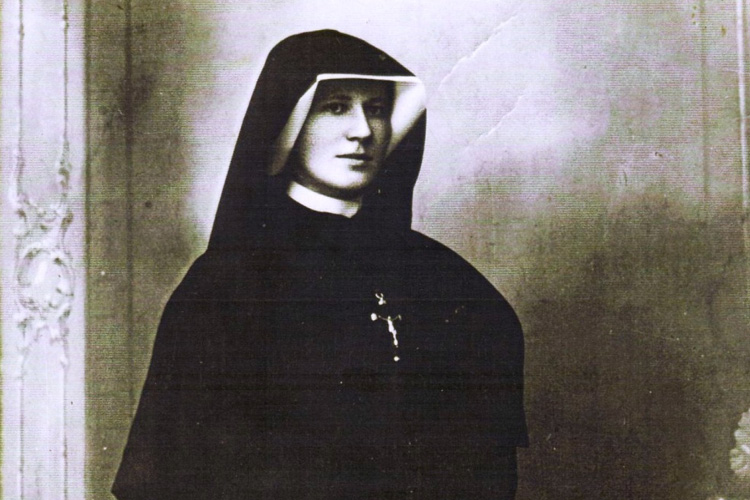
With the launch of the Year of Mercy today, and Poland hosting World Youth Day next summer, there’s nothing more current than talking about Saint Faustina and the Divine Mercy devotion.
The Life of Helena
Helena Kowalska was born in the village of Glogowiec, Poland, on 25 August 1905. She was third of ten children in a poor family. When she was 18, she asked her parents to enter the religious life but they told her to not even think about it. After that she let herself emerge in the frivolous of young life.
But God had a plan for her! In 1924, whilst attending a ball with her sister, she had a vision of a flagellated Jesus who said “How long shall I put up with you and how long will you keep putting me off?”
She went to Warsaw and had to work in a family house in order to collect the money for her entrance in the covent. In August 1925, she entered the Congregation of the Sisters of Our Lady of Mercy. The following year she received her religious habit and was given the name Sister Maria Faustina, to which she added, “of the Most Blessed Sacrament”, as was permitted by her congregation’s custom.
The Mystical Experiences of St Faustina
Throughout her life Faustina had several mystical experiences with Jesus where He revealed His plans for her. She would be the apostle of the Divine Mercy. God asked her to offer her personal sufferings in union with Him for the sins of others. In her daily life she was to become example of mercy, bringing joy and peace to others, to communicate to the world the wonders of Jesus Christ mercy.

On 22 February 1931, she had a vision of Jesus dressed in a white robe with two rays coming out of His heart – one red and one white. The red represents His blood and the white represents the water which justifies the souls. He asked her to paint this image and write ‘’Jesu I trust you.’’ He also told Faustina that he wanted the whole Church to celebrate the first Sunday after Easter as the Feast of Mercy.
Through Saint Faustina, Jesus also revealed ways to live out the response to His mercy, like the devotion to his Divine Mercy painting, the hour of mercy (the hour that Jesus died on the cross), and the prayer of the divine mercy chaplet.
Transforming the World
Her first attempts to do God’s will were not very successful, as not everyone believed in the authenticity of her inspirations. But after 1933, with the help of her spiritual director, Father Michael Sopocko, she managed to spread the devotion around the country. By 1935, thousands in Poland were participating in the Divine Mercy movement.
In the last four years of her life, Faustina wrote all of her mystical experiences with Jesus and the Divine Mercy in a diary. All these writings are together in the diary of Saint Maria Faustina Kowalska, “Divine Mercy in My Soul”, which Saint John Paul II called “the Gospel of mercy written from the perspective of the 20th century.”
Faustina died of tuberculosis in 1938. Since her death the Divine Mercy devotion has grown a lot. With the support of Pope John Paul II, it became popularly established throughout the entire Church; and, on 30 April 2000 she was canonized by John Paul II.
God is merciful!
During this Jubilee Year of Mercy, we should remember and meditate more about God’s mercy, and a good way is by getting to know, and meditating on, Santa Faustina’s teachings of the Divine Mercy.
Understanding more the mercy of God allows us to trust Him more, to trust him with our entire lives and enjoy the amazing gift that is living in God’s mercy. That no matter what we have done, or have been through, God is always there with His heart open to cover us with his mercy if we look for it!
How to Recite the Chaplet of Divine Mercy
The Chaplet of Mercy is recited using ordinary rosary beads of five decades. It’s usually prayed every day at 3pm – the hour of mercy.
Optional Opening Prayers
You expired, Jesus, but the source of life gushed forth for souls, and the ocean of mercy opened up for the whole world. O Fount of Life, unfathomable Divine Mercy, envelop the whole world and empty Yourself out upon us.
O Blood and Water, which gushed forth from the Heart of Jesus as a fountain of Mercy for us, I trust in You!
Begin with the Our Father, the Hail Mary and the Apostle’s Creed. Then, on the large bead before each decade:
Eternal Father, I offer you the Body and Blood, Soul and Divinity of Your Dearly Beloved Son, Our Lord, Jesus Christ, in atonement for our sins and those of the whole world.
On the ten small beads of each decade, say:
For the sake of His sorrowful Passion, have mercy on us and on the whole world.
Conclude with (Say 3 Times):
Holy God, Holy Mighty One, Holy Immortal One, have mercy on us and on the whole world.
Optional Closing Prayer
Eternal God, in whom mercy is endless and the treasury of compassion inexhaustible, look kindly upon us and increase Your mercy in us, that in difficult moments we might not despair nor become despondent, but with great confidence submit ourselves to Your holy will, which is Love and Mercy itself.
Our Lord said to Saint Faustina:
“Encourage souls to say the Chaplet which I have given you… Whoever will recite it will receive great mercy at the hour of death… I desire to grant unimaginable graces to those souls who trust in My mercy… Through the Chaplet you will obtain everything, if what you ask for is compatible with My will.
Leave a Reply
You must be logged in to post a comment.